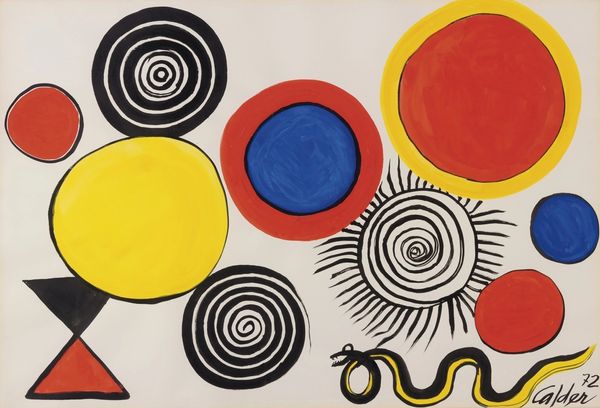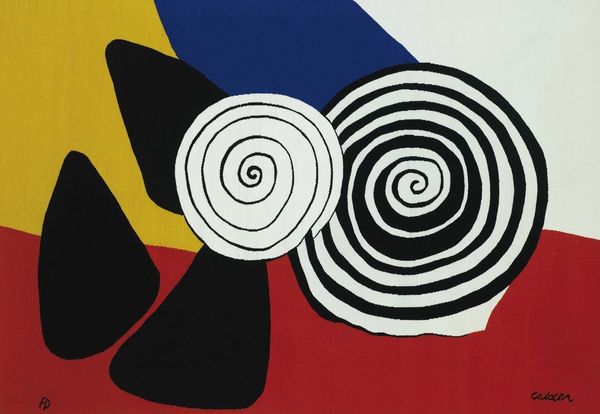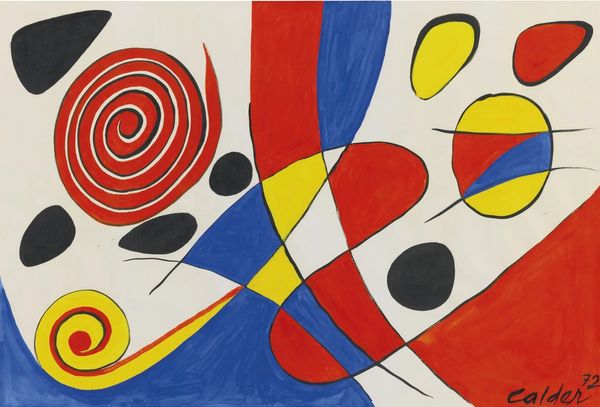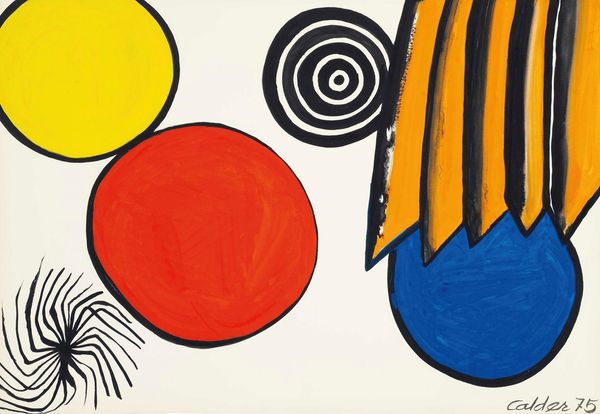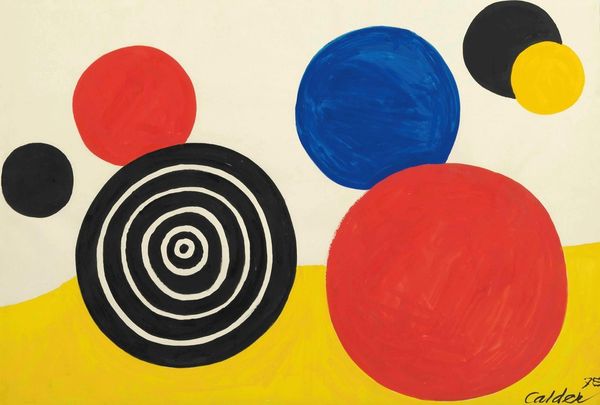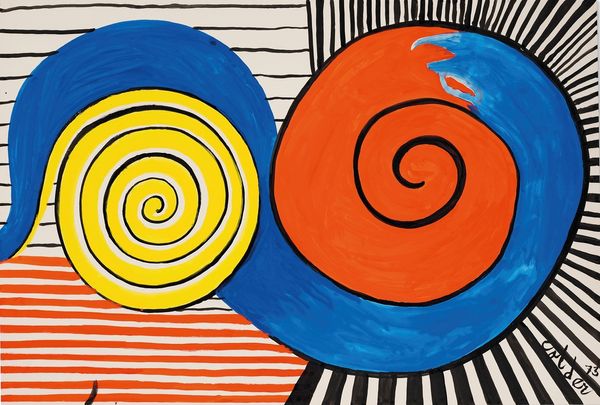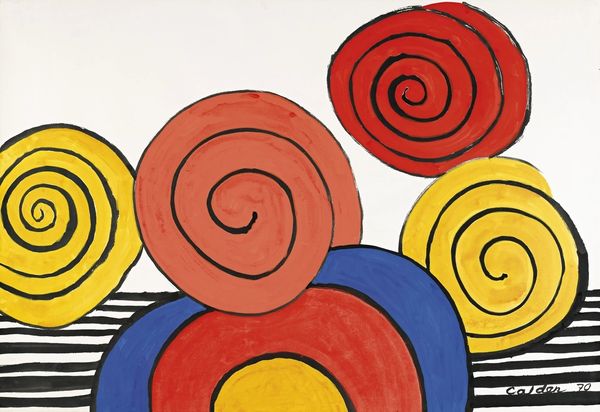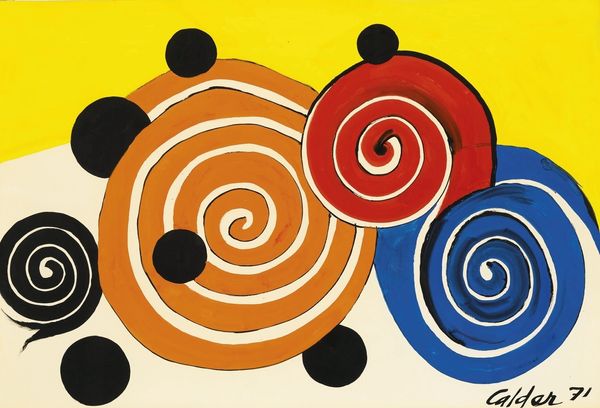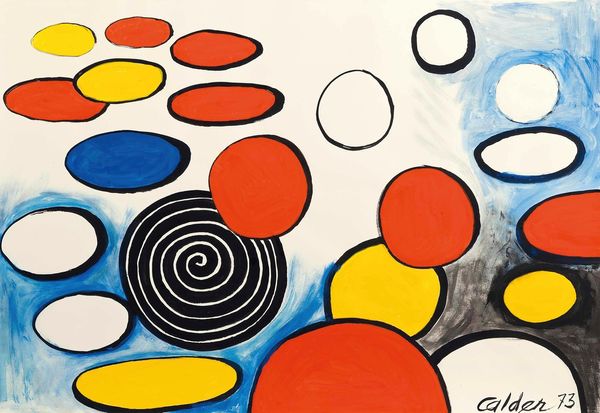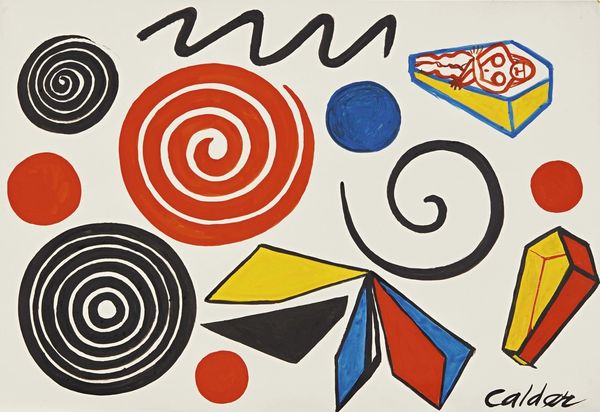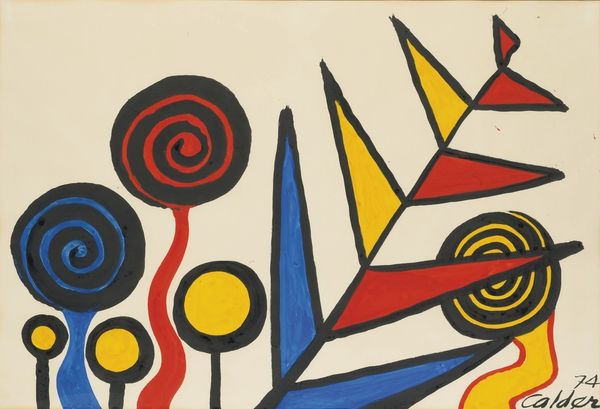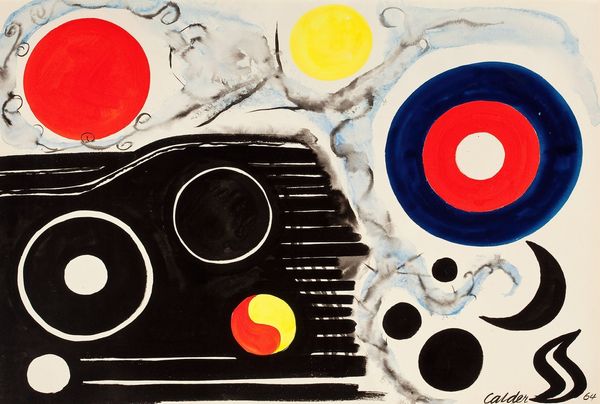
painting, acrylic-paint
#
popart
#
op-art
#
painting
#
op art
#
pop art
#
colour-field-painting
#
acrylic-paint
#
abstract
#
geometric
#
geometric-abstraction
#
pop-art
#
line
Copyright: Modern Artists: Artvee
Editor: So, here we have Alexander Calder’s "Petalled black spiral" from 1970, painted with acrylic. At first glance, the simple shapes and bold colors almost give it a childlike wonder, yet there's something so calculated about their arrangement. What do you see in this piece? Curator: What strikes me is the dynamic interplay between the graphic simplicity of the shapes and the sophisticated arrangement within the picture plane. Note how the circles are not merely geometric forms but possess a textural quality due to Calder’s application of paint. Are they overlapping or simply placed near one another? How does that placement influence how your eye moves across the image? Editor: I see what you mean about the textures! It's not just flat color. I also think my eye jumps between the spiral shapes versus the blocked colored circles – kind of like following two separate rhythms happening at the same time. Curator: Precisely. This "rhythm" derives from Calder's careful distribution of visual weight, primarily achieved through color and form. Do the darker elements carry greater visual gravity, pulling your attention more forcefully than the fields of red and yellow? How does the white background come into play? Editor: Definitely, the black shapes grab your focus. And the white almost feels like empty space even though it is a key structural part of the composition, like it provides breathing room around the circles. Curator: Exactly. It provides a structural foil, a silence against the assertive forms. Examining these relationships - the visual weights, color tensions, structural layout, textures- grants a fuller appreciation, beyond mere shapes and color, as these all produce meaning. Editor: It’s interesting how focusing on the construction of the shapes actually gives the image movement, like I'm reading a visual score. Curator: It certainly provides us an avenue of analysis outside just thinking on subject, no? By recognizing those fundamental compositional aspects, we unlock new perspectives on what the artwork signifies.
Comments
No comments
Be the first to comment and join the conversation on the ultimate creative platform.
